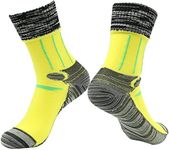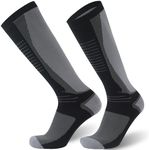Buying Guide for the Best Mens Ski Socks
Choosing the right men's ski socks is crucial for comfort, warmth, and performance on the slopes. The right pair of ski socks can make a significant difference in your skiing experience by keeping your feet warm, dry, and blister-free. When selecting ski socks, consider the material, thickness, fit, and additional features that cater to your specific needs and preferences.MaterialThe material of ski socks is important because it affects warmth, moisture-wicking, and comfort. Common materials include merino wool, synthetic fibers, and blends. Merino wool is known for its excellent insulation, moisture-wicking properties, and softness, making it a popular choice for cold conditions. Synthetic fibers like polyester and nylon are durable, quick-drying, and often more affordable. Blends combine the benefits of different materials. Choose a material based on your preference for warmth, moisture management, and comfort.
ThicknessThe thickness of ski socks affects warmth and fit inside your ski boots. Thin socks provide a snug fit and better control, making them suitable for performance-oriented skiers or those with well-fitted boots. Medium-thickness socks offer a balance of warmth and comfort, ideal for most recreational skiers. Thick socks provide maximum warmth and cushioning, suitable for extremely cold conditions or those who prefer a looser fit. Consider the temperature you'll be skiing in and your boot fit when choosing the thickness.
FitA proper fit is essential for comfort and performance. Ski socks should fit snugly without being too tight, as this can restrict circulation and cause discomfort. Look for socks with a contoured fit that matches the shape of your foot and leg. Features like arch support, reinforced heels and toes, and elastic cuffs can enhance fit and prevent the socks from slipping or bunching. Try on different sizes and brands to find the best fit for your feet.
CushioningCushioning in ski socks provides extra comfort and protection in high-impact areas like the shin, heel, and toe. Light cushioning is suitable for skiers who prefer a closer fit and more control. Medium cushioning offers a balance of comfort and performance, making it a good choice for most skiers. Heavy cushioning provides maximum comfort and warmth, ideal for long days on the slopes or those with sensitive feet. Consider your comfort preferences and the type of skiing you'll be doing when selecting the level of cushioning.
Moisture-WickingMoisture-wicking properties are important to keep your feet dry and comfortable. Skiing can cause your feet to sweat, and moisture-wicking materials help to draw sweat away from your skin and allow it to evaporate. This prevents blisters and keeps your feet warm. Look for socks made from materials like merino wool or synthetic fibers that have good moisture-wicking capabilities. If you tend to sweat a lot, prioritize this feature to ensure your feet stay dry.
LengthThe length of ski socks affects coverage and warmth. Over-the-calf (OTC) socks are the most common for skiing, as they provide full coverage up to the knee, offering maximum warmth and protection. Crew-length socks are shorter and may be suitable for warmer conditions or those who prefer less coverage. Consider the length of your ski boots and the level of coverage you prefer when choosing the sock length.
DurabilityDurability is important to ensure your ski socks last through multiple seasons. Look for socks with reinforced areas in high-wear zones like the heel and toe. High-quality materials and construction techniques can also enhance durability. If you ski frequently, investing in durable socks can save you money in the long run and provide consistent performance.
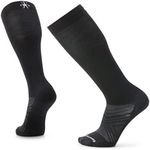
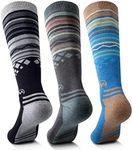

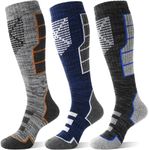
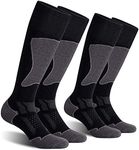


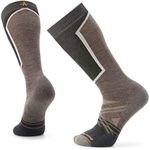


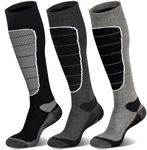


![RANDY SUN Waterproof Socks for Skiing, [SGS Certified] Men's Women's Knee High Running Golf Hunting Neoprene Boot Socks, 1 Pair-Grey&Navy Blue-waterproof Socks S](https://images-proxy.bestreviews.guide/imigUKZn45O8_zdbDz_IyQ8ojF4=/0x150/https://m.media-amazon.com/images/I/412HLkLO4WL._AC_CX679_.jpg)
